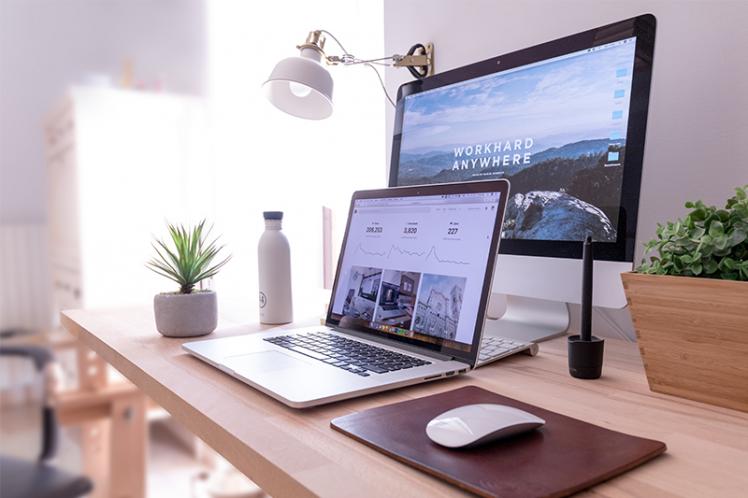Is Digital Learning Harder to Remember?

Digital learning is everywhere and is becoming significantly more sophisticated with better apps, more video, artificial intelligence and better application of the psychology and science of learning in its design.
However, one of the challenges of digital learning is that it isn’t what our brains evolved to deal with. Even with virtual reality, which looks and feels real, a part of you always knows that it’s not. Will a world of digital learning ever be as ‘sticky’ as learning in the real world?
I believe an evidence base is vital for designing modern workplace learning and stories have been consistently shown to work. So, I have a personal story for you to illustrate some reflections on learning through digital technology.
Just over two years ago we cleared our house of junk and put all our favourite, personal possessions into storage to keep them safe because we were renting our house and moving to Spain for an adventure. Eighteen months on, early this year, we had decided to stay in Spain for the foreseeable future and therefore ship our things over. Unfortunately, just before Easter, I had a phone call saying there had been an enormous fire at the storage unit and everything was burnt to the ground. All our possessions were gone!
Whilst it’s completely impossible to replace the things you’ve accumulated as a family over more than 30 years, we obviously needed to claim on the insurance. But we didn’t have a detailed list because we’d mostly put pre-packed boxes into storage.
So, I went to our house, which had just been vacated by one set of tenants to see what I could remember. I sat quietly in every room and tried to remember what it had been like when we’d been living there 18 months before. I looked, I listened, I felt and recreated from memory what had been in each room and exactly where. I imagined myself opening draws and looking inside. I remembered the activities we did in each room, cooking in the kitchen, eating in the dining room, working in the office, family gatherings in the lounge and conversations and stories in the bedrooms.
It was amazing and sad, almost everything came back to me with huge clarity. I remember the sounds of particular drawers as they opened, the noise of a little doorstop that, somehow, I always managed to accidentally kick. I saw all our pictures on the walls, despite the fact they were now bare. I felt the wickerwork of the stool in our bedroom where I used to pile up clothes. I felt the weight of a special bowl, the fabric of my coats, the texture of my favourite rolling pin. I could vividly recall the photos of our family and friends over our many years of ordinary and special days in the house. And the images, sounds and emotions of all the music we played on real instruments, vinyl, CDs and even tapes!
Those strong sensations are etched in my memory through seeing, hearing, touching, feeling and even smelling those belongings, day after day, year after year in the same places. Whilst we can never recover what we’ve lost the memories are firmly embedded in my brain and body.
What will be different for our memories from now as we all gather far more digital possessions? You don’t excitedly wait for printed photos to come back from the printers anymore and then spend hours filing them in albums so you can sit next to your friends or family, chatting about them and letting them flick through the pages. The pictures in physical photo albums are sorted into categories or dates and stay in the same place so as you browse through you can easily anticipate what comes next.
In the days when buying vinyl was the norm you had to go to the record shop, pick up the album and look at the amazing covers, carry it home, carefully pull out the record and put it on the turntable.
Again, they were in a predictable order so you always knew what the next song would be. And woe betides you if you didn’t take care and got a scratch on your vinyl because you’d hear it forevermore! With digital music you can download it with a few clicks and swipes on your phone and rearrange it into infinitely variable playlists; never repeating the same combination.
Books get bent and wrinkled from use, they fade in the sun and age with time. You can write notes in them and often find the information you want just because you know it’s halfway down the page about 20 pages in. You can tell which are favourites simply by looking at them. Your recipe books probably have smears of ingredients on them and you can smell the curry or chocolate, or whatever is your favourite.
Physical objects have their own quirks, scratches, noises, weight, smells and texture which become hooks in your memory as you handle or use them.
Our brains evolved to create our memories by building links between sensations, emotions and ideas, whether concrete or abstract. And novelty, repetition and sameness all help to cement those memories.
It is different for digital memories because each one is less distinct because they have less additional sensory information. We tend to store and access them with less effort and we are far less inclined to throw them away, so we store more rather than selecting and pruning.
Even the things we actually physically do with computers are less differentiated. For instance, physically writing involves far more diverse movements than typing on a computer or swiping on your phone. Digital technology is designed to be ‘smooth’ with a more consistent appearance and feel and to reduce the damage that easily happens to physical technology. And there’s less incidental repetition that also strengthens memory. Nowadays I struggle to tell people the title of the book I’ve just read on my kindle because I don’t see the cover every time I start to read.
So, what might happen in the future? Might it be harder to remember what we learn through digital technology? Might it be harder to recall our own memories if they’ve not been so deeply encoded with physical sensations? Maybe it won’t matter as ideas, concepts and the world change so rapidly that we don’t necessarily need to remember for the long term? But maybe there are some things that are just better when they are real.
I think digital technology is amazing and can be a fantastic boost to learning but I believe it probably needs to be blended with real-life sticky material too. In Neuroscience for Learning and Development, you will find numerous evidence-based suggestions to make digital learning itself ‘stickier’ but you may have to work harder at it.




